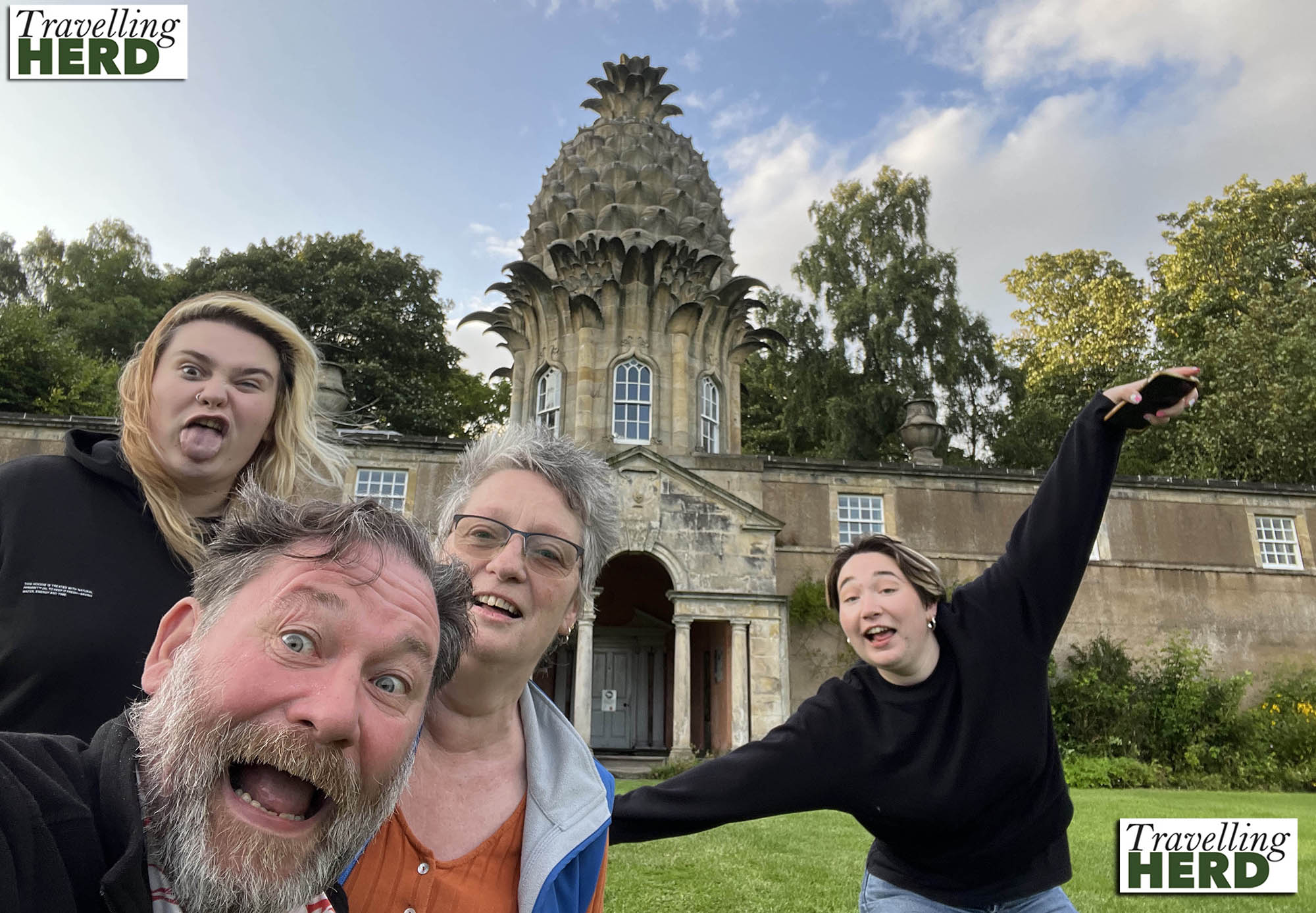Read this blog: The one where we visit a Scottish win.
Saturday 19th and Sunday 20th August 2023
We started our exploration of the local area on Saturday morning by visiting the historic site of the Battle of Bannockburn.
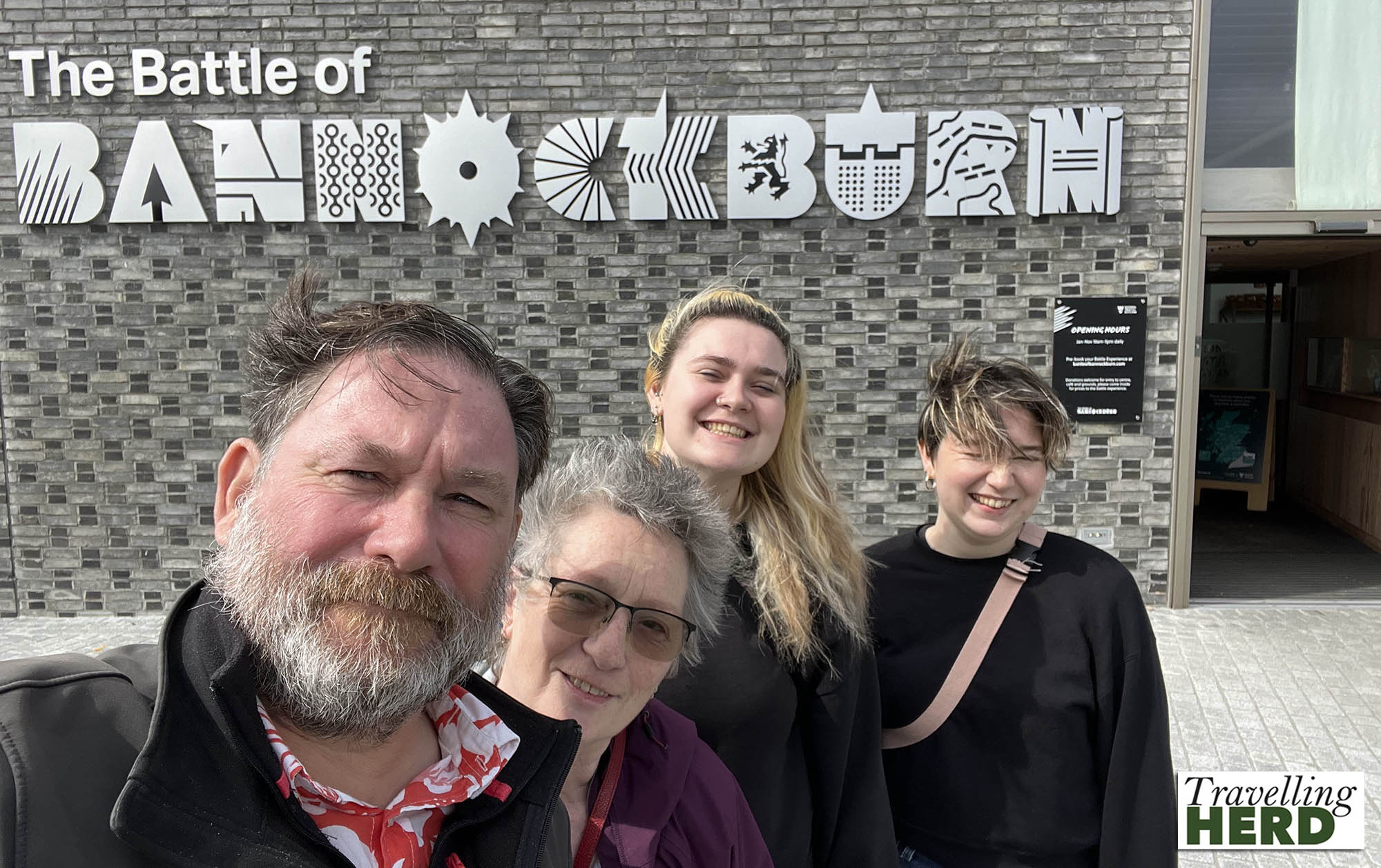
This battle took place on 23rd and 24th June 1314, between the army of Robert the Bruce, King of Scots and the army of King Edward II of England. It was a turning point in the First War of Independence between Scotland and England: a decisive victory for Robert the Bruce at Bannockburn effectively re-established independence for the Scots although it was not officially declared until 14 years later in 1328.
The visitor centre is well worth the entrance fee. A very enthusiastic and knowledgable guide explained the movements of troops as we stood looking down on a sunken 3D map of the area. He described how the terrain had influenced various decisions the leaders on each side had made and ultimately contributed to the outcome of the battle. Matilda had not thought that battle and troop movements could be so interesting.
The visitor centre is child-friendly and there are activities as well as interactive displays. Apparently you are never too old to dress up.
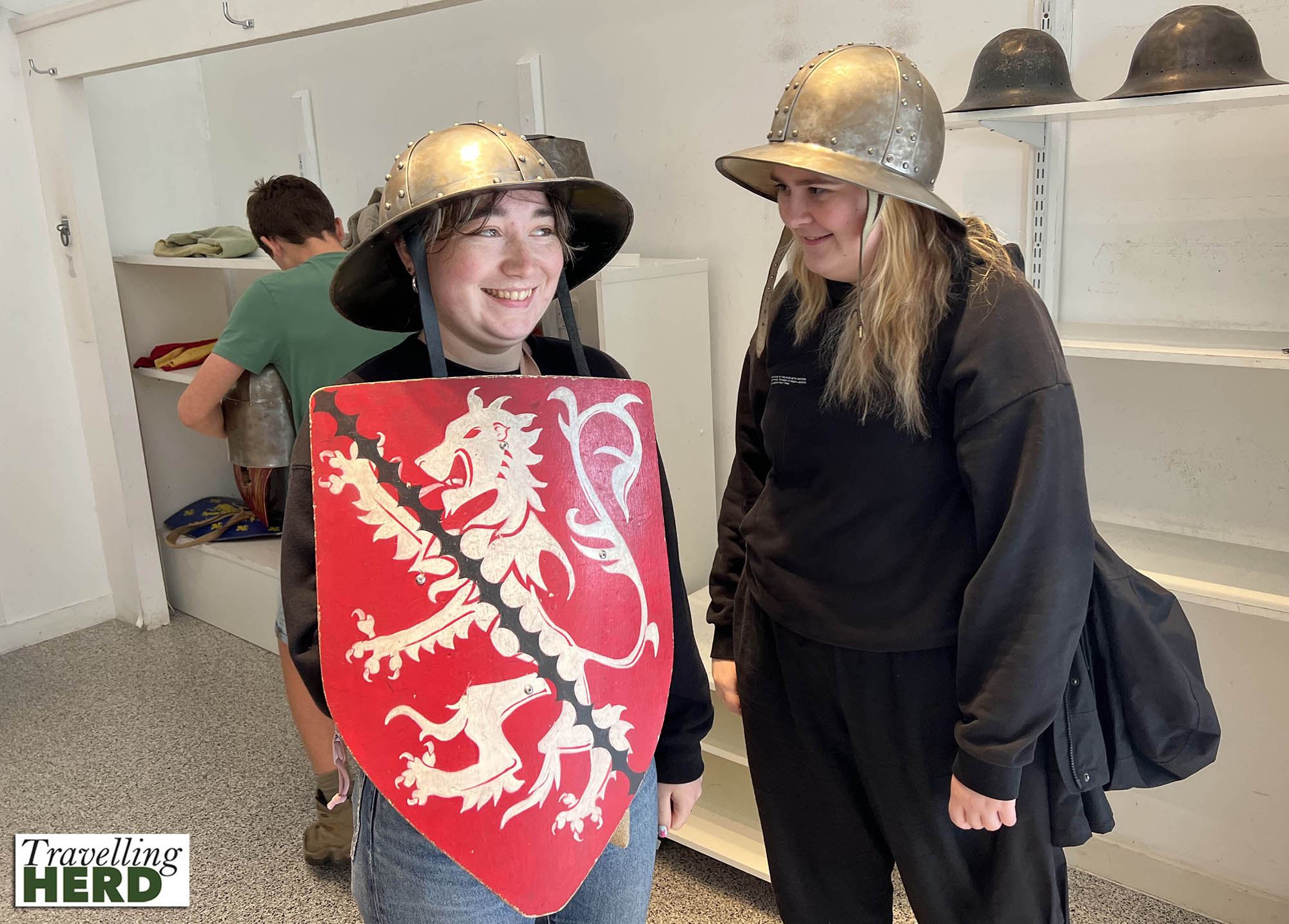
The much photographed bronze statue of Robert the Bruce, commissioned in 1964, stands outside.
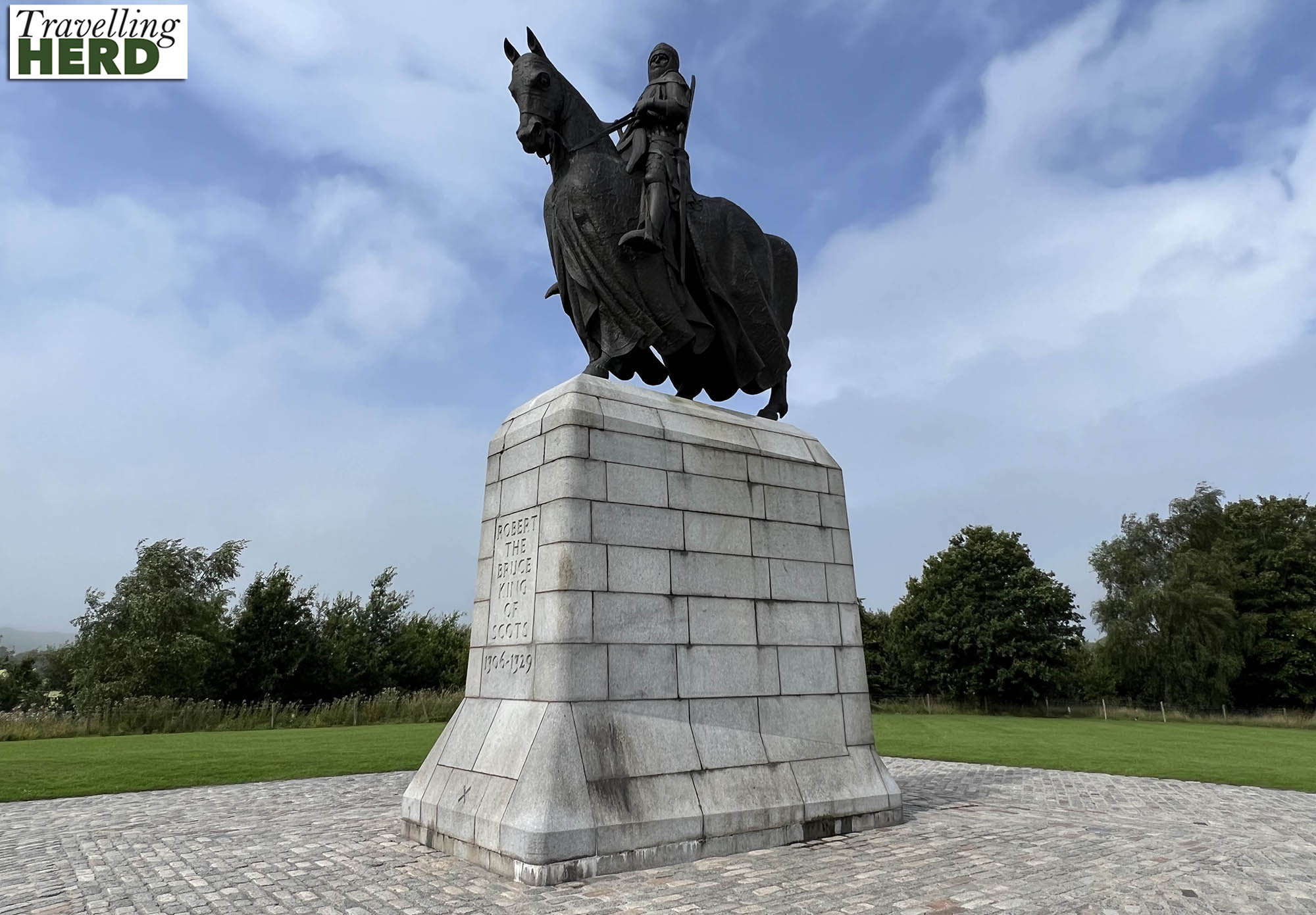
From Bannockburn, we carried on into the nearby town to visit Stirling Castle.
As a student, Matilda remembers visiting the castle with her mother over forty years ago but the approach was unrecognisable: the deserted almost gloomy streets of her memory have now been replaced by tourists and busy cafés.
Built on a volcanic plug of rock which reaches up to 250 foot high, the castle dominates the surrounding landscape. Stirling Castle was both a palace and a fortress and almost all of the buildings seen today were built between 1490 and 1600 by the Stewart kings, James IV, James V and James VI.
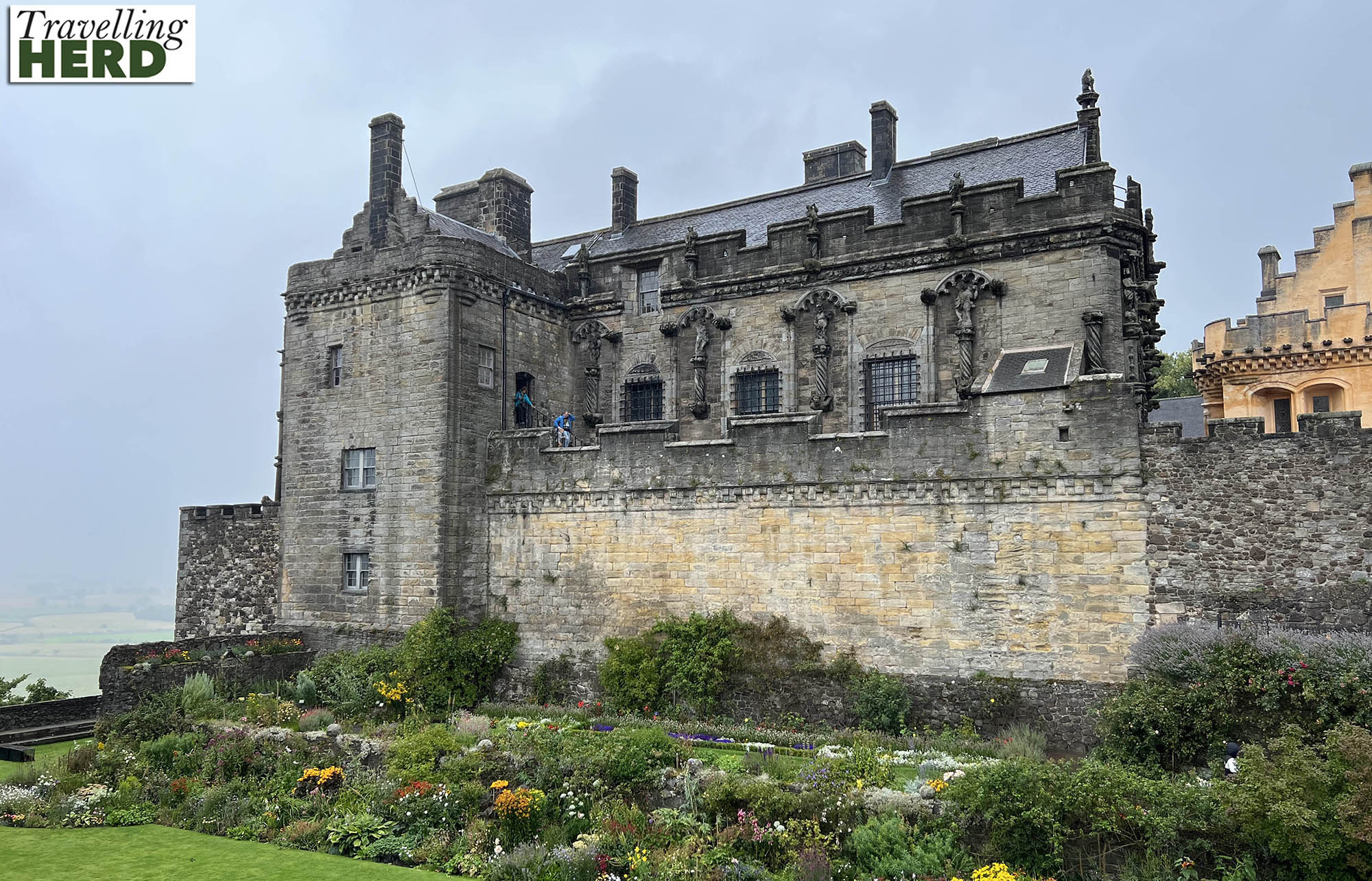
The Great Hall [just visible above right] has been renovated since matilda’s last visit and is now a warm peachy colour as it would have been in the 1500s. Renovations took place between 2001 and 2011. The exterior is now described as royal gold harling and it creates a very different impression from the discoloured stonework Matilda remembered.
We were fortunate that when Matilda presented her English Heritage membership card, the gentleman on the desk interpreted this to mean that all four of us qualified for free entry which represented quite a saving.
Inside the castle also seemed much changed. More rooms were open to visitors and the interior, having also been renovated in the interim, seemed surprisingly light and far more opulent.
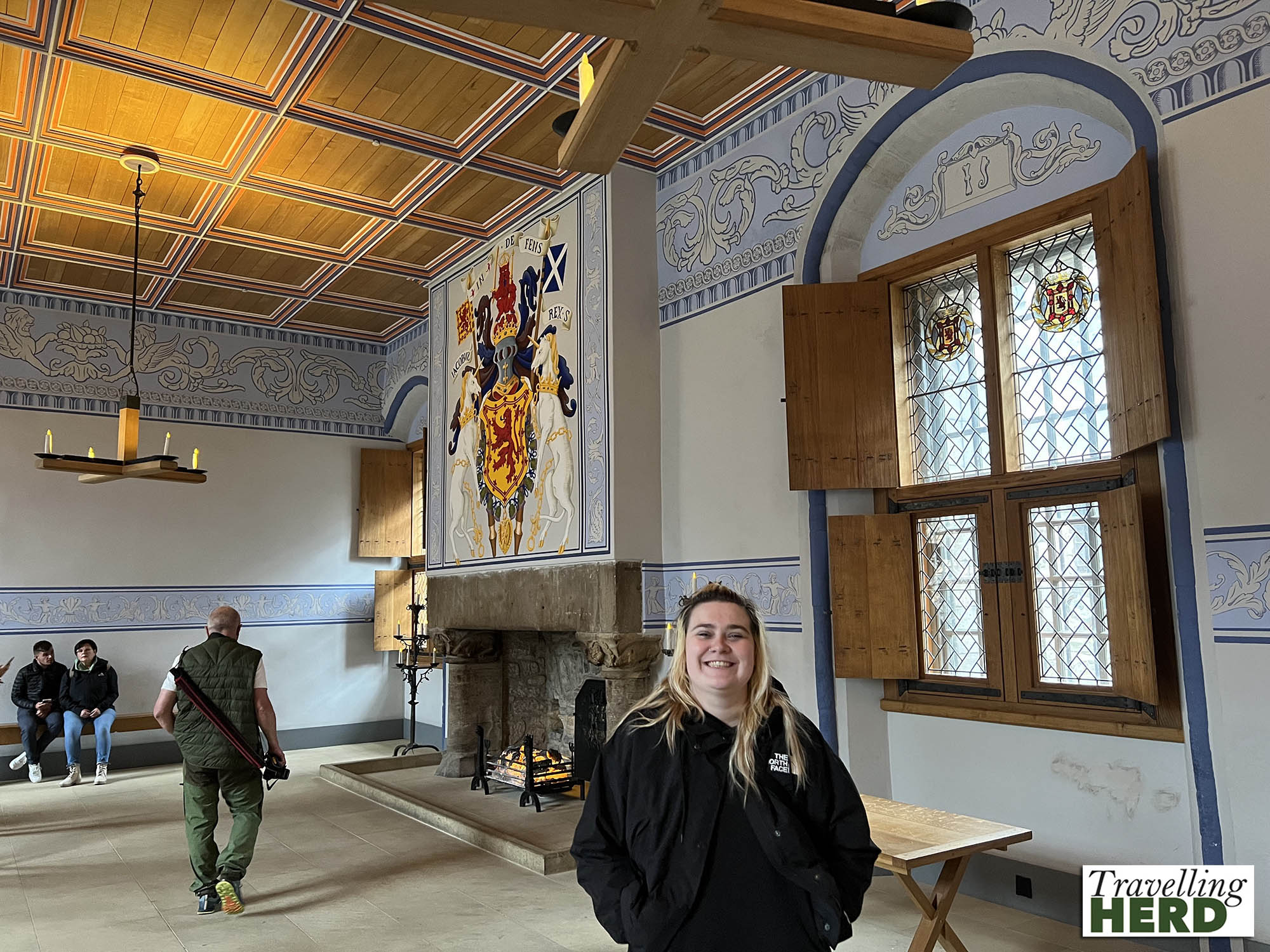
The outside of James V’s Palace [below] is covered in remarkable sculptures. These include Roman gods and goddesses; fantastical and mythical creatures as well as the king himself, all intended to illustrate how great James V was and the benefits his reign would bring.

The Great Hall at Stirling Castle was completed around 1503 and is the largest banqueting all of its kind ever built in Scotland. Four pairs of tall windows allow light to stream onto the dais where the king and queen would have sat and it was heated by five large fireplaces. Apparently Mel Gibson celebrated here after the premiere of Braveheart.
In 1881 the Argyll and Sutherland Highlanders took over the castle as their regimental headquarters and the Great Hall was used as a barracks. The regimental Museum is still housed in the castle.

There is also a new café and after a sustaining hot beverage, we drove on to the historical burgh of Culross.
As we drove out of Stirling, Matilda looked out for places she might remember but sadly not much seemed familiar, although she did recognise a pub called the Settle Inn. The name had always made her smile. She began to realise that despite living in Stirling for her second year, she had failed to get the most out of the city, spending most of her time on campus. She would like to return to the city with more time to explore and possibly revive more memories.
Culross – Scotland’s most complete surviving example of a burgh dating from the 17th and 18th centuries – has a silent ‘L’.
The SatNav did not take us along the main road and as Robert negotiated the narrow, steep and winding cobbled lanes, it reminded us of the some of the picturesque fishing villages in Cornwall. We arrived just in time to buy our entry tickets to view and video and visit the striking ochre coloured Culross Palace also known as the Great Lodging.
The garden here has been planted with herbs fruits and vegetables as it would have been in the 17th century and is said to be home to some rare Scots Dumpy hens, but unfortunately we did not see any on our visit. The name apparently derives from their characteristically short legs.
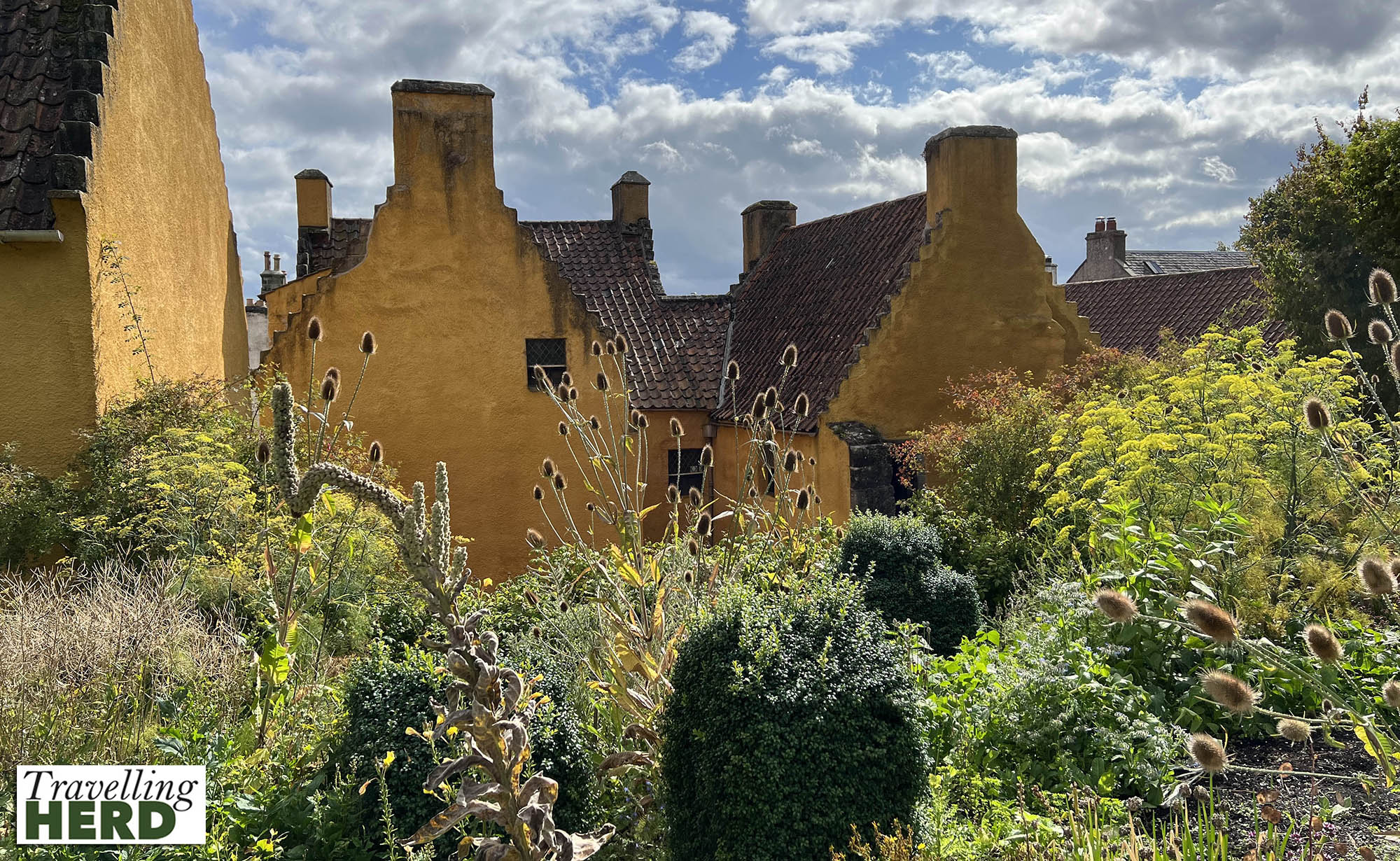
Culross Palace was built by Sir George Bruce who was Laird of Cannock. He made money from coal mines as well as salt production and is credited with having built the first coal mine to extend under the sea here at Culross. An entrance is still visible on the shoreline.
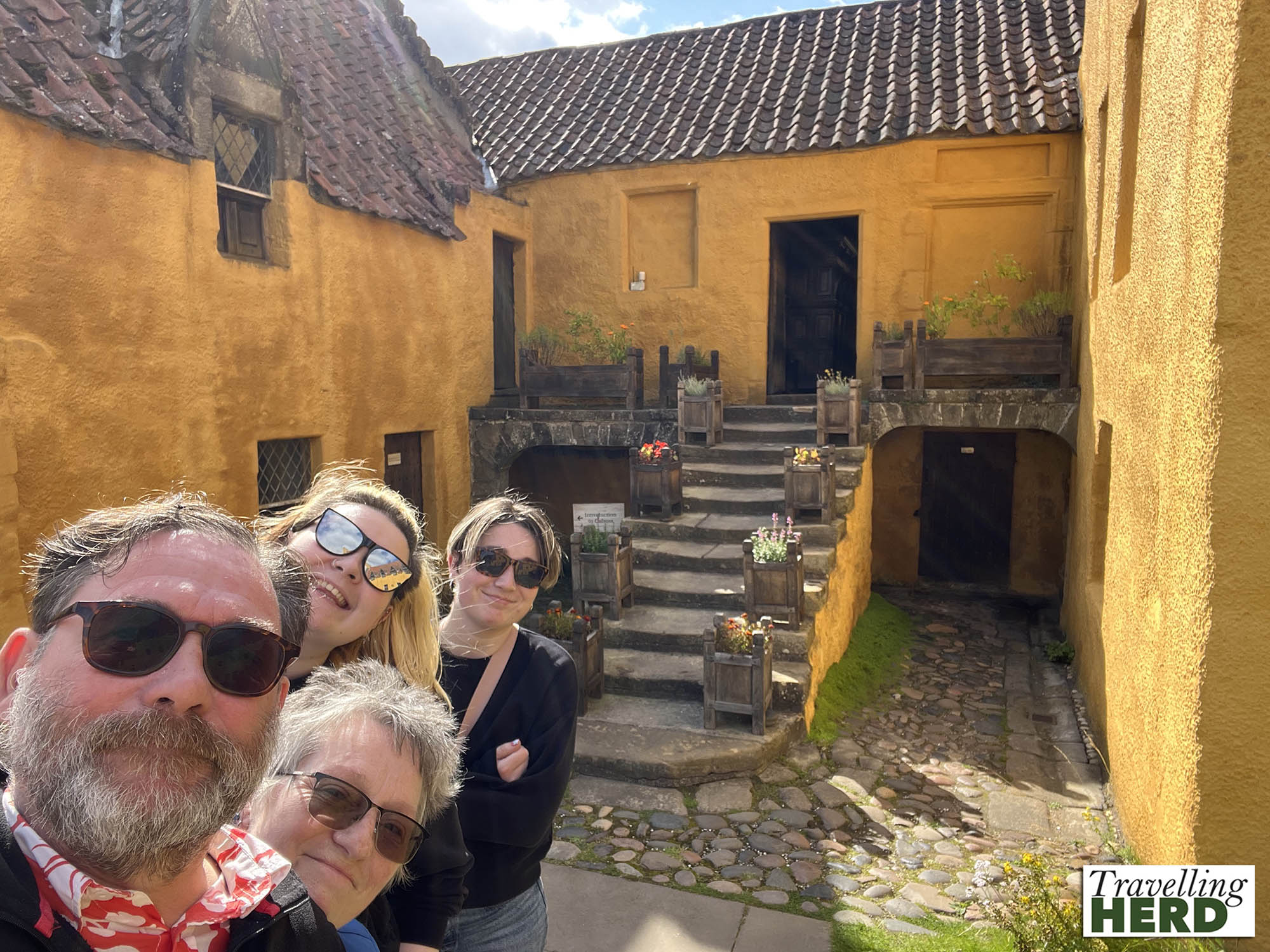
Many of the buildings in Culross have terracotta tiled roofs as the tiles were brought back from Europe as ballast on board the returning trade ships.

Inside the palace the decor also reflects Sir George Bruce‘s trading partners and includes Dutch floor tiles and glass as well as pine from the Baltic and decorative ceiling painting.
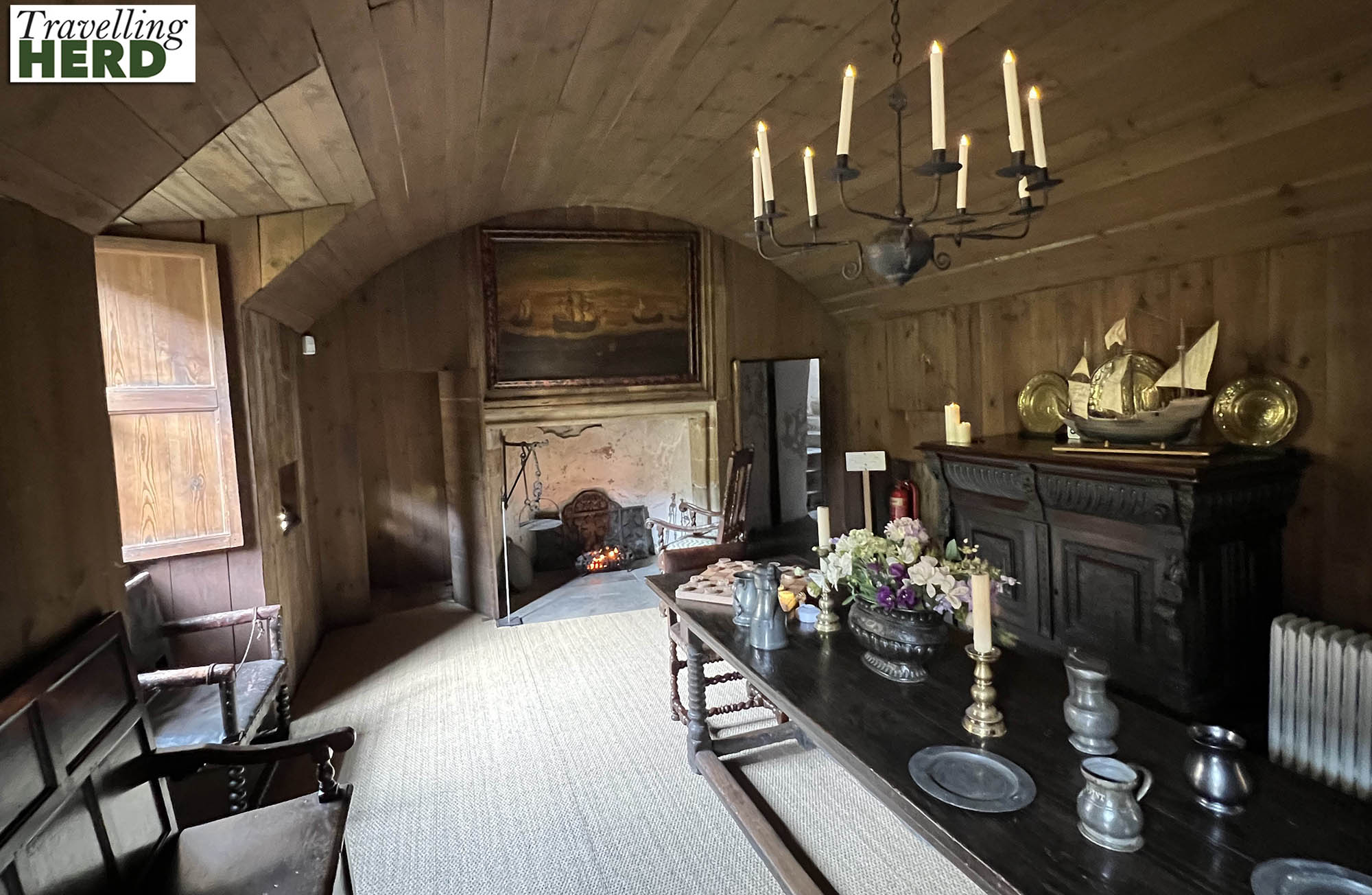
We had no time to see any of the other sites in this historic village and so returned to The Pineapple. Having waited decades to stay there, Matilda demanded family photo sessions every time we returned to the building.
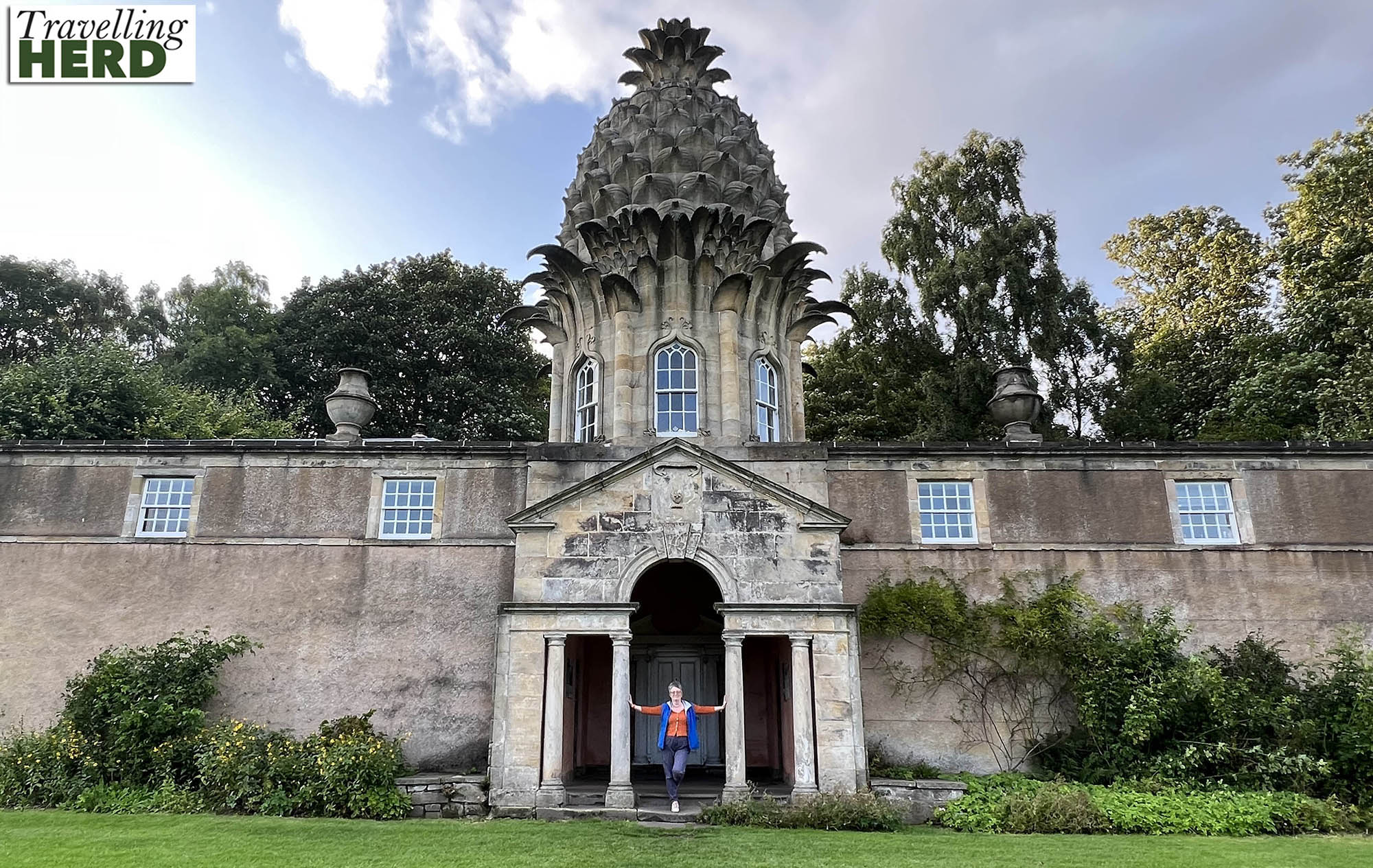
Matilda had originally pre-booked tickets to go on the Falkirk Wheel for Sunday morning but Ruth was keen to watch England play in the World Cup Final and we were fortunately able to reschedule the tickets for the afternoon. We had hoped for a more celebratory feel to our trip on the Wheel, but were nevertheless proud of the Lionesses’ impressive achievement in reaching the final.
The Falkirk Wheel opened in 2002 and is the only rotating boat lift in the world. It replaced a flight of 11 locks which were removed in 1933 and required 3,500 tons of water per run. The locks rose 35 metres [over 100 feet] to link the Forth & Clyde Canal with the Union Canal above. The wheel itself is 35 meters tall and raises boats by 24 meters so boats must still pass through two locks to climb the final 11 meters.
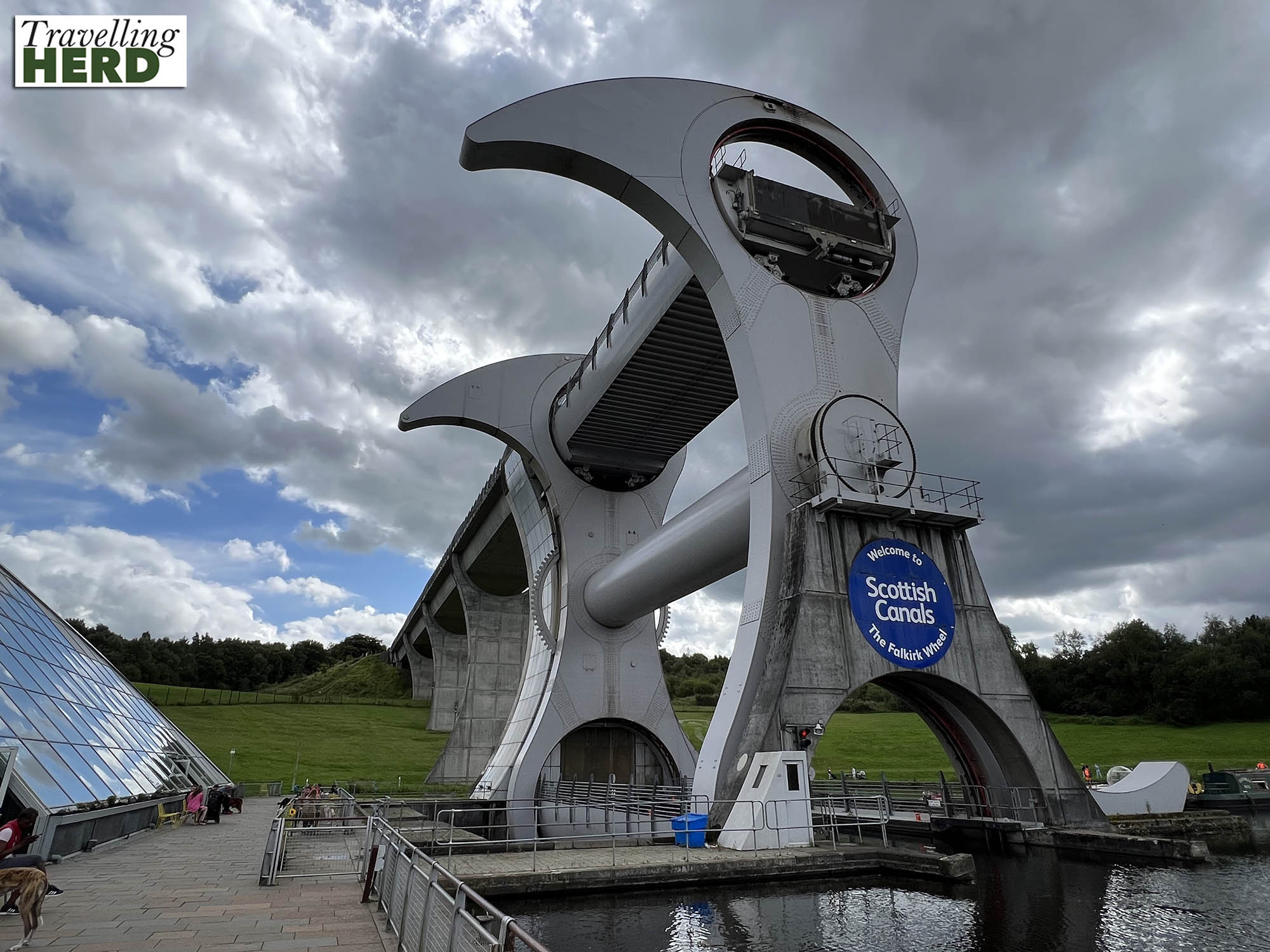
Built on the contaminated site of a former tar works, the Falkirk Wheel formed part of the Millennium Link project to reconnect the two canals and comprises two balanced gondolas, or caissons, which rotate around a main axle to transport vessels between the two canals.
The design resembles a double-headed Celtic axe.
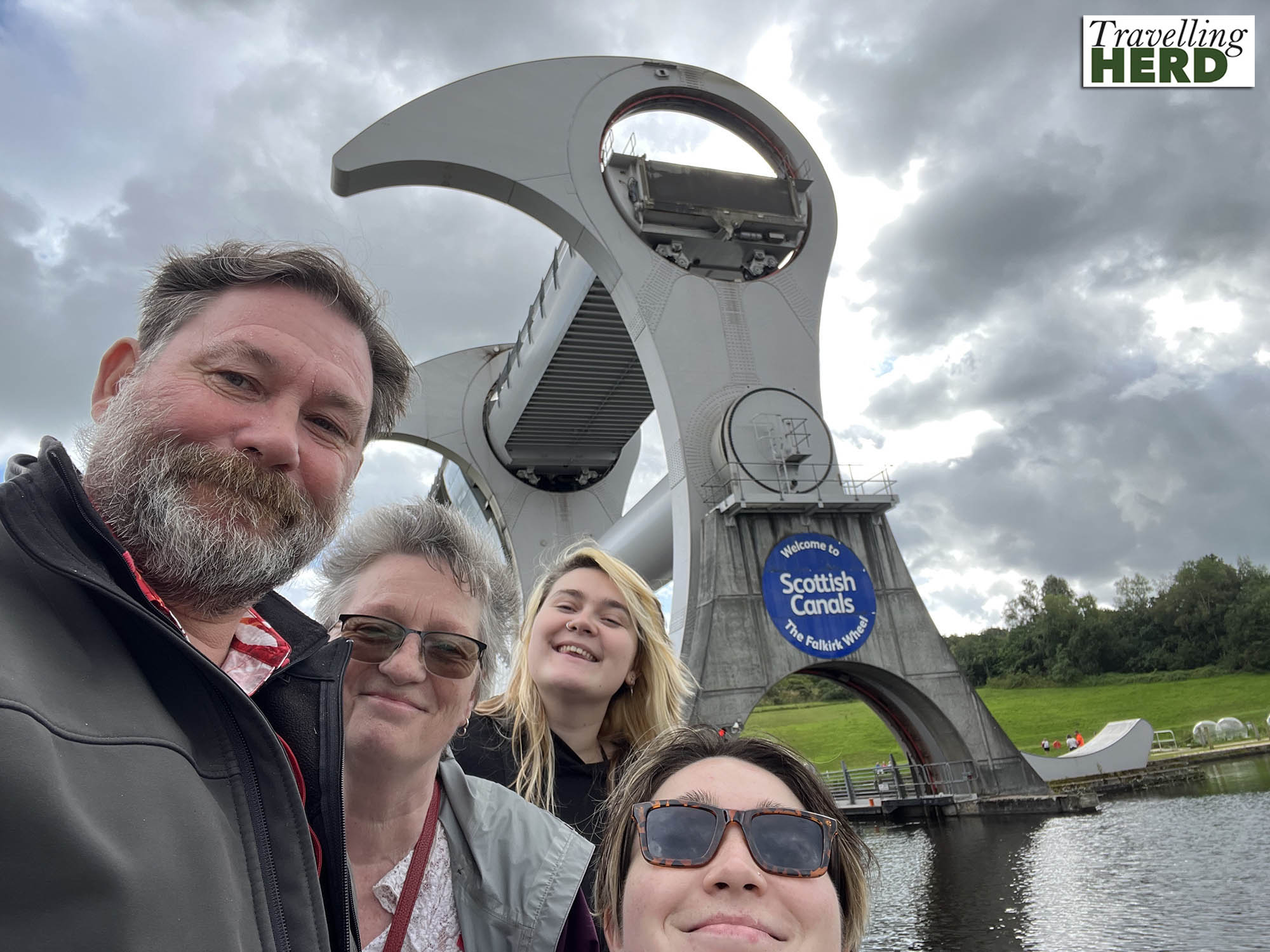
The Falkirk Wheel operates on Archimedes’ Principle which states that ‘floating objects displace their own weight in water’ so no matter the number or size of the passengers or how many boats enter a gondola exactly the same weight of water leaves thereby maintaining the precise equilibrium between the two.
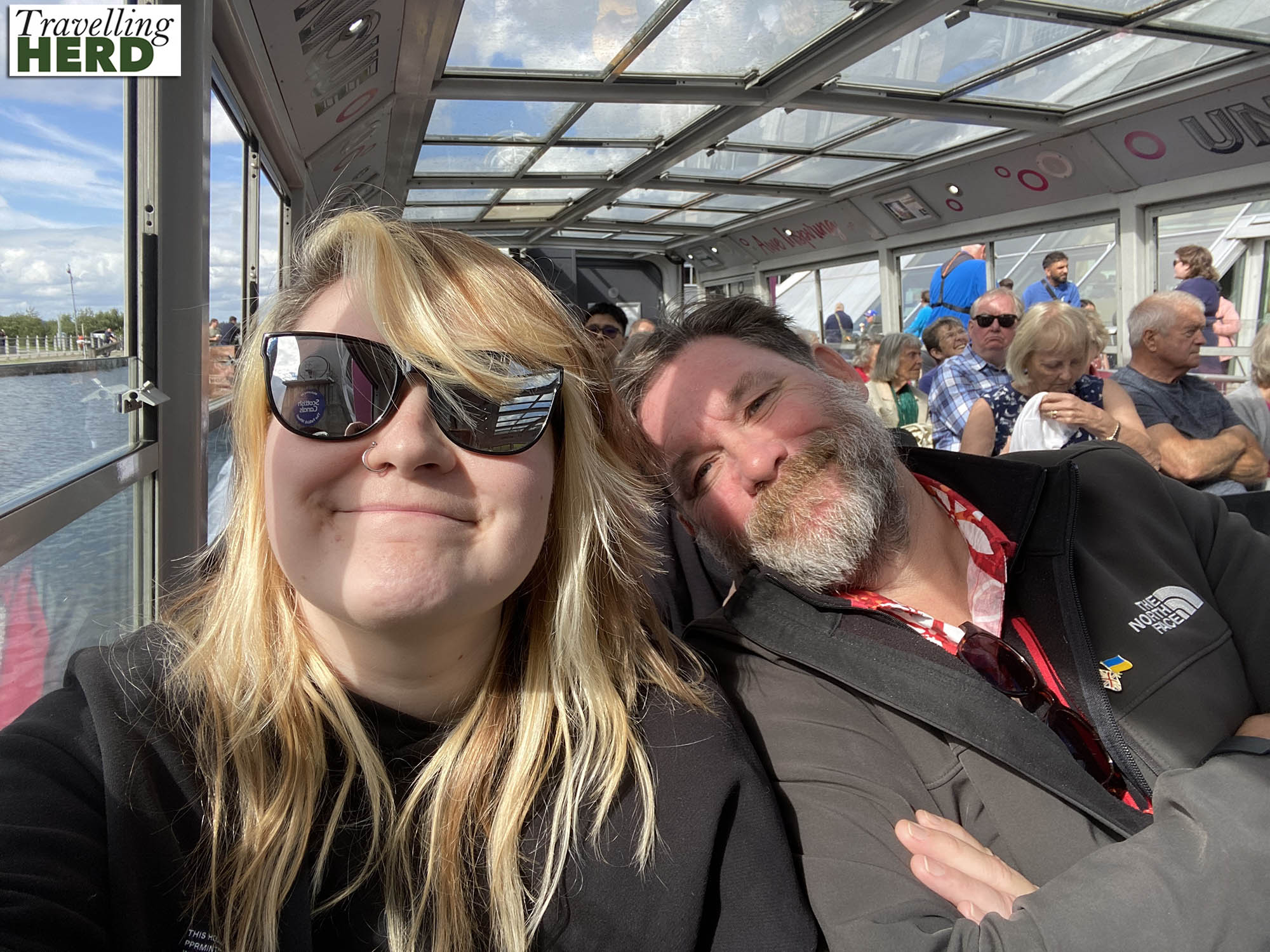
Each gondola holds 500,000 litres of water, the same amount as an Olympic swimming pool. Sensors monitor the water levels on each side and automated sluices and pumps are used to maintain the water levels to within 37mm [1.5inches] while vertically hinged watertight doors maximise the space available for craft within the gondolas. The Wheel can rotate in both directions at the operators’ discretion: this is to minimise directional wear.
A gear system ensures that as the axle rotates, the caissons stay perfectly level. We were amused to learn that before construction began the gear systems were modelled using Lego to check they would work.
The 180 degree rotation takes just five minutes [see Video of the day]. Since the structure is so perfectly balanced power is only needed to start and stop the movement. Consequently, The Falkirk Wheel, uses just 1.5kWh for each rotation: the same power it would take to boil eight kettles.
After rising 24 meters, the boat ride takes you through the Roughcastle Tunnel to a turning point before the two locks.
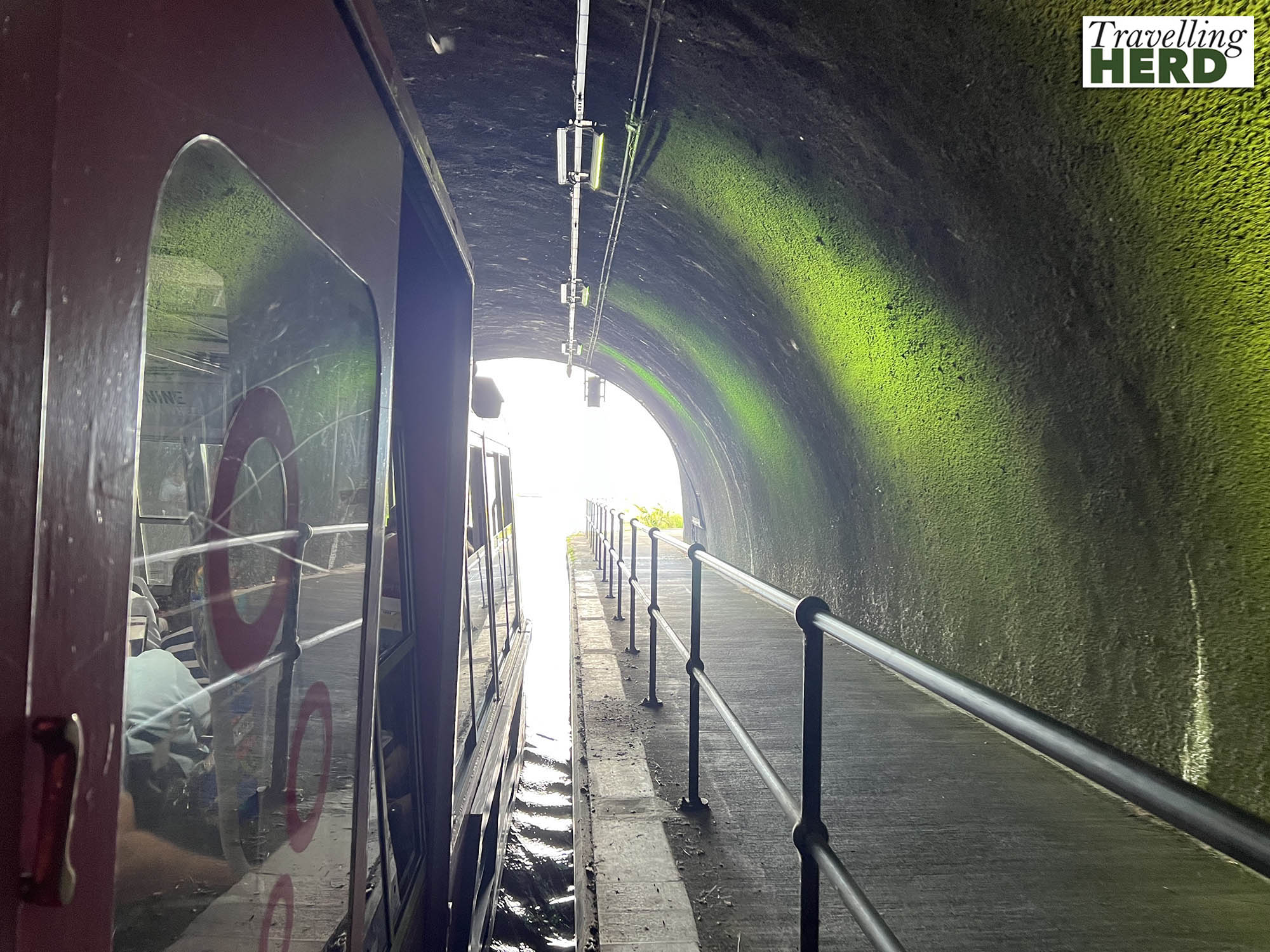
Now the tunnel has cheerful LED lighting but nearly 200 years ago, the notorious Burke and Hare relocated from Ireland aiming to help with the tunnel’s construction and it is said that the tunnel was used to smuggle corpses to doctors in Edinburgh for medical dissection.
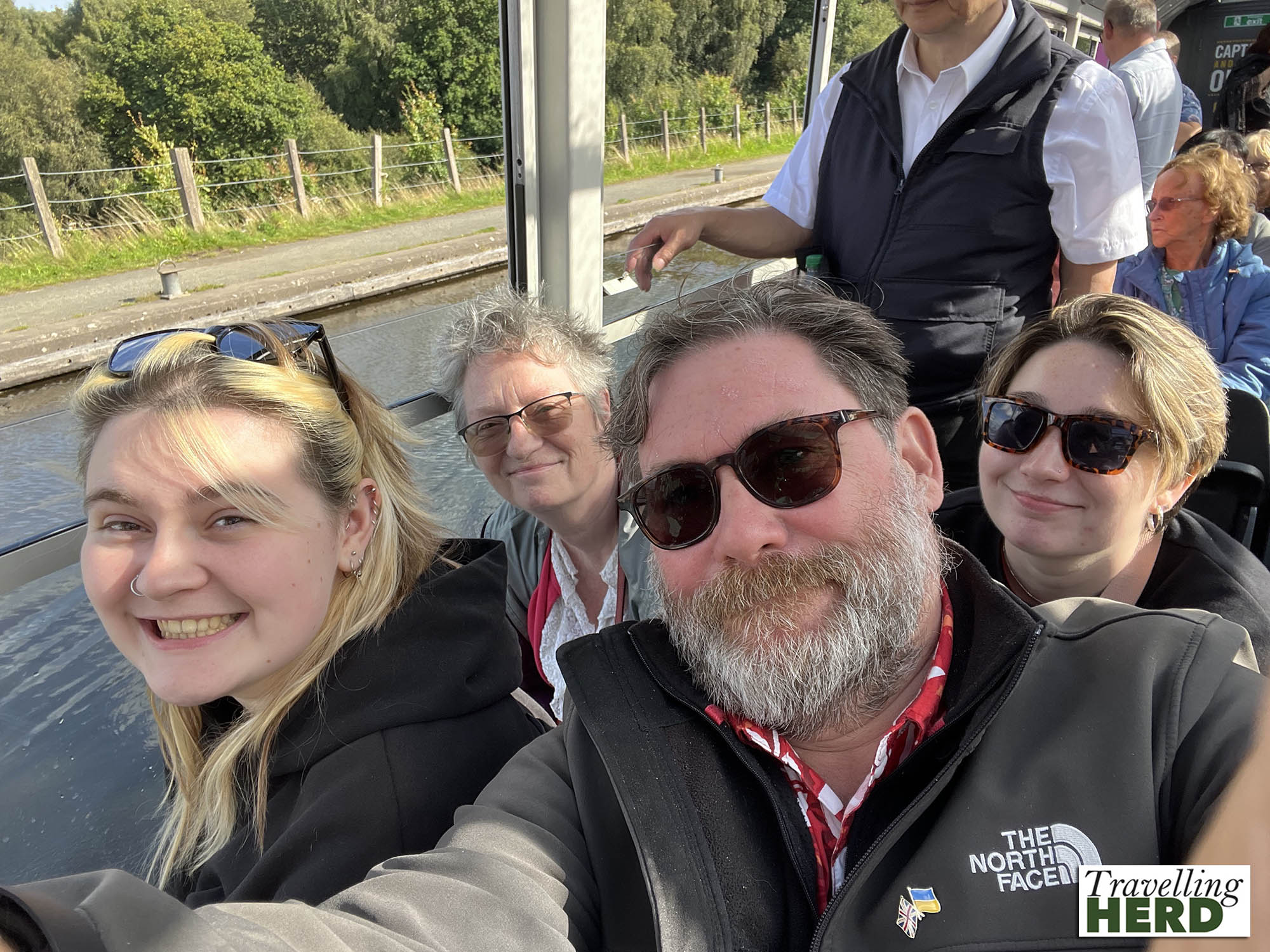
After our round trip, we returned to The Pineapple for another family photoshoot.
The Landmark Trust describes the building as “an eccentric work, of undoubted genius, built of the very finest masonry”.
No-one knows who the architect was but the design is certainly ingenious. The walls are of double construction with a cavity through which hot air could be circulated to encourage the ripening of the fruit and as the garden sits over a coal outcrop there was a ready supply of fuel.

The base of each leaf is higher than it appears when viewed from below, so that the rain water drains away and cannot collect anywhere. Indeed, in the before and after photos provided, the stone pineapple seems largely intact whilst the bothies to either side are more or less derelict.
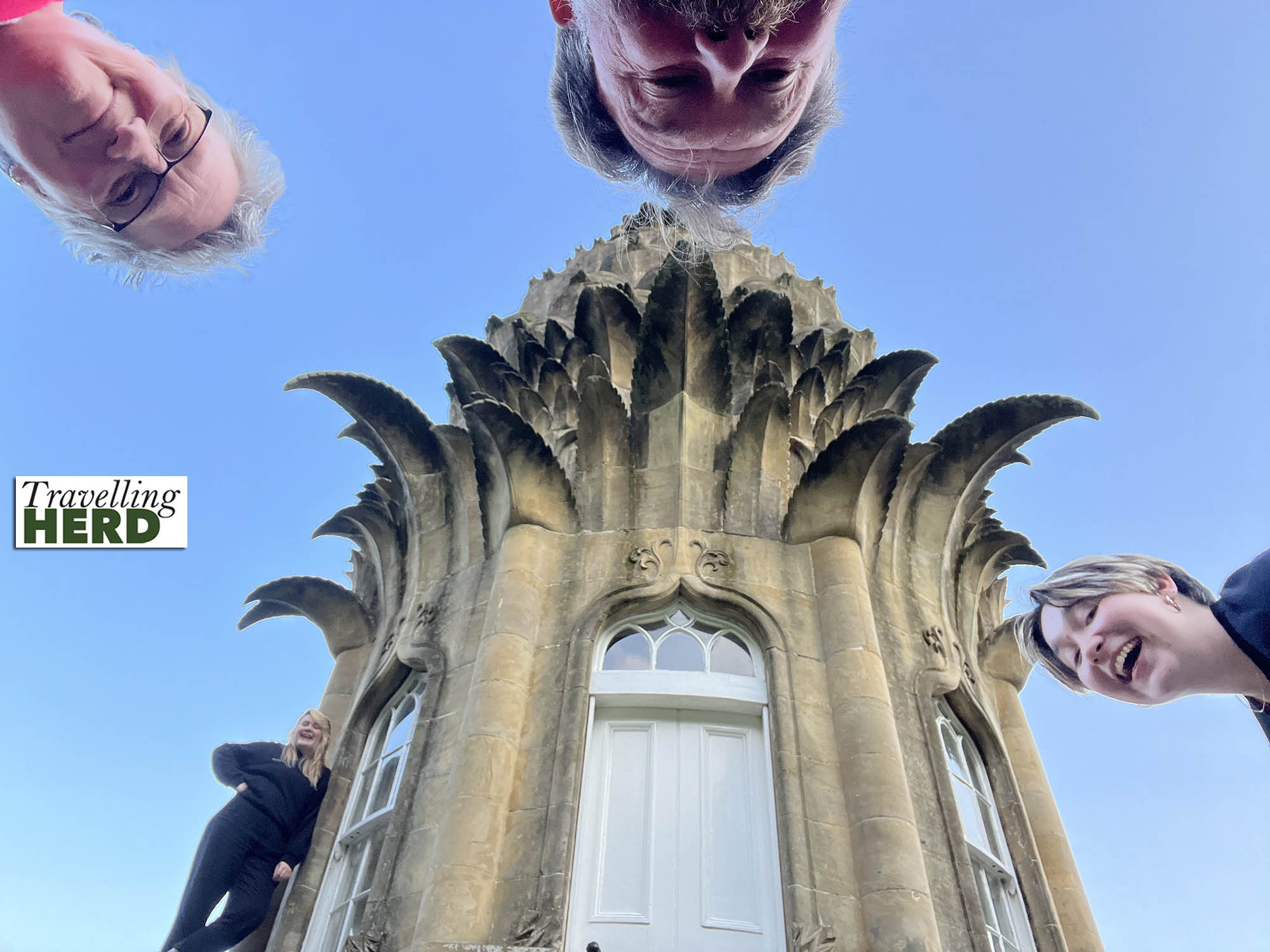
Video of the day:
Selfie of the day:
